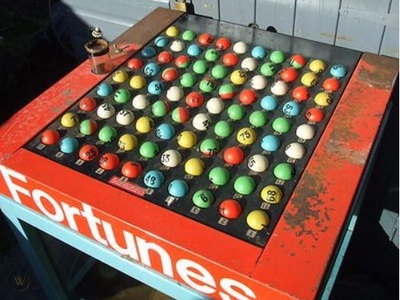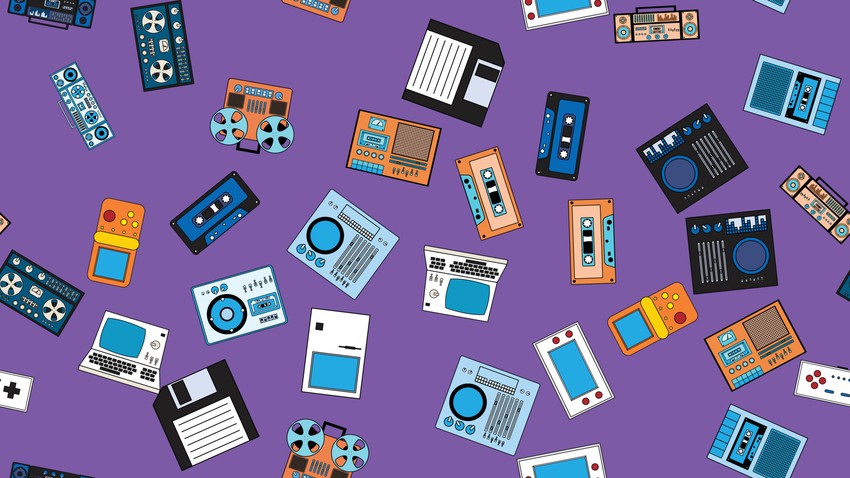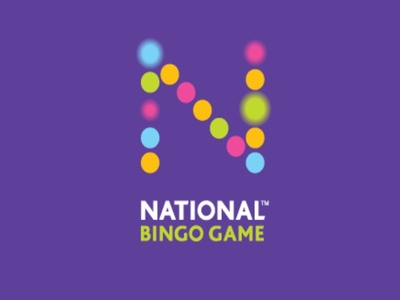 When you think of the game of bingo, as we all often do being bingo fans, some of the things that pop into our heads might be the dabbers, bingo tickets, the caller, and of course, the bingo balls themselves.
When you think of the game of bingo, as we all often do being bingo fans, some of the things that pop into our heads might be the dabbers, bingo tickets, the caller, and of course, the bingo balls themselves.
What’s so strange about that?
Well nothing, except that bingo halls haven’t actually used bingo balls for decades, so it’s strange that the image persists.
Even when advertising their games, bingo halls will often use imagery of bingo balls amongst other things, despite knowing full well that there is not a ball to be found in their venue.
They don’t tend to use images of the old air machines that pushed the bingo balls up the tube to the caller though, probably because that would make bingo seem antiquated. Not the balls though, they are used surprisingly often.
So what happened to our bingo balls, where did they go and why, and are they ever likely to make a comeback?
Like S Club 7 keep threatening to do….
What Happened to Bingo Balls?

Put simply, technology happened to bingo balls.
We aren’t talking about online bingo here, but the technology that developed because of the internet and around the same time certainly quickened the bingo ball’s journey out of the back door.
In the late-70s and early-80s, everyone was getting very excited about what technology could do for the world. The first mahoosive mobile phones were being released, there were posh car phones (remember them?), huge rounded computer screens had popped up in offices, the first Windows operating system came out.
It was the early days of the technological revolution, and bingo balls could not escape it any more than vinyl records, mechanical cash registers, or typewriters.
They were replaced by an automated computer system that was programmed to pick out balls at random using an RNG. This RNG is basically like the engine of the programme; it is a randomiser that selects balls in no particular order to simulate the randomness of drawing balls in person.
It had many benefits over manually drawing the balls by hand, and it was so successful that in many bingo halls, the exact same system is still drawing the balls several decades later.
With this technology in place, the poor old bingo ball was quietly retired, never to be seen again.
Why Were Bingo Balls Replaced by a Computer?

It may be sad to think of the balls being consigned to a dusty drawer somewhere, but don’t be too upset that they are gone – gameplay was improved no end by the change.
A few key benefits are:
- Fairness
- Speed
- Rhythm
- Mistakes
A caller can never be accused of cheating or favouritism if they aren’t actually in control of which balls are drawn, and any minor defects in the balls themselves that might cause one to be selected more than the others is also eliminated by doing things digitally.
This makes things indisputably fairer, and means that players have no reason to suspect foul play or get annoyed by the results.
A computer can also call ‘balls’ much more quickly than using a physical machine, which means we can get through a greater number of games in the same amount of time.
More bingo per session? Yes please.
Linking in to this, is the rhythm or flow of the calls.
A computer can be programmed to call a new ball every 10 seconds exactly, so that games can be planned out to specific timings, and the players can get into a nice easy rhythm.
The flow of the game can be quite calming if you have ever played in a real bingo hall, there is something tranquil about it. It doesn’t take long to get into the rhythm so you know when the next number is about to come. It also helps players to keep on top of their tickets and not miss a claim.
Lastly, a bingo machine can go wrong, break down, get a ball stuck or have any other number of potentially game stopping issues. Not to mention the caller getting a nasty case of butterfingers.
If there are no physical balls being drawn, then none of these mistakes can occur.
So doing away with bingo balls was the right decision for bingo, strange as that sounds.
There was something else that happened in the 80s though that really put the final nail in the coffin for bingo balls.
ISDN and Linked Games
 ISDN stands for ‘Integrated Services Digital Network’, and it became widely used in the mid-80s, although it is going out of fashion now.
ISDN stands for ‘Integrated Services Digital Network’, and it became widely used in the mid-80s, although it is going out of fashion now.
It’s all very technical, but basically, it uses your phone line and splits it so that several different people can be on the same call at the same time.
This allowed for linked games between bingo halls, so it is no surprise really that the National Game was first introduced in 1986, slap bang in the middle of this technological revolution.
Once this concept was dreamt up, there was no coming back for the humble bingo ball, so unless you happen to spot an old machine in a church hall or village fete or somewhere like that, you are unlikely to ever see them again sadly.
The bingo world moved on from ISDN to a faster and cheaper service called ADSL in the end, but it was this initial technology that allowed the National Game to come into existence, and that would never have been possible with the old system of a bingo ball machine.
So the good old bingo ball did us a valuable service for a great number of years, but now, they are almost certainly permanently retired.
